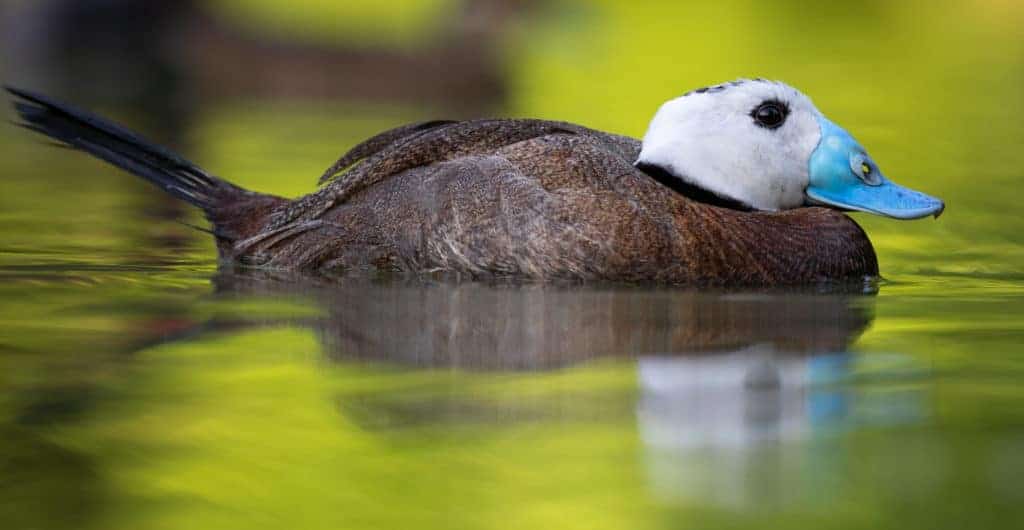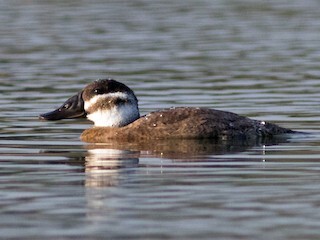White-headed Duck


Scientific Name
Oxyura leucocephala
Alternative Names
White-headed Stiff-tail, Malvasía Cabeciblanca (Spanish)
Measurements
| Feature | Male & Female |
|---|---|
| Length | 43–48 cm (17–19 in) |
| Weight | 580–750 g (1.28–1.65 lb) |
| Wingspan | About 60–70 cm (24–28 in) |
Status
Classified as Endangered by the IUCN. Populations are shrinking due to habitat loss, pollution, hunting, and hybridization with introduced Ruddy Ducks.
Identification
A small diving duck with a chunky body and stiff tail often held upright. The male is easy to recognize with his white head, black crown and neck, reddish-grey body, and bright blue bill. Females are more muted—brownish-grey with a pale face, darker cap, and a dark stripe across the cheek. Both sexes sit low in the water and often dive rather than fly when disturbed.
Voice
Mostly quiet. Males make soft grunts or clicks during courtship, while females give low growling or quacking sounds.
Diet
Omnivorous. Feeds mainly on underwater plants, seeds, and algae. Also takes insects, crustaceans, and small aquatic creatures. Food is usually gathered by diving.
Distribution
Native to parts of Spain, North Africa, Western Asia, and Central Asia. Some birds are seen further north, but it’s not always clear if these are wild or escapees from collections.
Habitat
Prefers large lakes, ponds, and marshes with open water and thick vegetation along the edges. Needs dense plants for nesting and protection, and deep enough water for diving.
Behaviour and Ecology
A strong swimmer and diver, but reluctant to fly. When threatened, it quickly dives or swims away rather than taking off. Often seen alone or in small groups but may gather in larger numbers outside the breeding season.
Breeding
Nests in reeds or floating vegetation. Females lay around 5–10 eggs in a hidden nest. Only the female incubates the eggs for about 25–28 days. Ducklings leave the nest soon after hatching and follow the mother.
Wintering
Mostly resident but may move short distances to ice-free lakes and wetlands during winter.
Conservation
Main threats include loss and pollution of wetlands, hunting in some regions, and hybridization with the introduced Ruddy Duck, which produces fertile offspring and threatens the purity of the species. Conservation efforts include wetland protection, habitat restoration, and control of Ruddy Duck populations in Europe.
